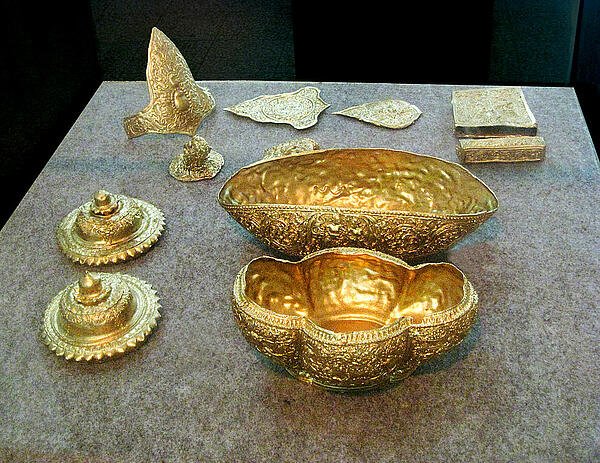Gold and the ancient Philippines
Iron age discoveries across the Philippines have long convinced historians that there must have been trade routes set up between the people living on the archipelago and those living in the Tamil Nadu region in India. This is believed to have peaked during the ninth and tenth centuries BC.
In fact, historic artefacts have revealed that the islands were regularly referred to as the ‘island of Chryse’, or the “Golden One”, which was a name used by Greek writers to refer to an island east of India that was rich in gold. Similarly, ancient historians such as Titus Flavius Josephus also referred to it in terms of gold; Josephus named the country Aurea, equating it with biblical island Ophir from where ships Tyre and Soloman brought back gold and other valuable trade items.

The idea that the Philippines was strongly connected with gold is reflected in the artefacts discovered on the islands by archaeologists. Items discovered across the islands suggest that mining began in around 1,000 BC, with locals trading materials including gold, silver, copper and iron.
Discoveries show that these items were soon transformed into jewels, gold ingots, chains and other precious items, which were then passed down the generations or traded. Gold in particular was also used to create other valuable products such as gold dagger handles, gold dishes and gold tooth plating, which made this particular material extremely valuable when it came to trading.
By the year 100 BC, and long into the following centuries, the Philippines became known far and wide for its ‘golden art’. In fact, the island of Mindoro was known in its own right for the locals’ talent for combining gold with other metals with such skill that it fooled even the most experienced silversmiths.
Thankfully, communities in the Philippines were so active in terms of their international trade that it was easy for gold to be transported many hundreds and even thousands of miles, as far as Japan and even the Maldives. Some historians also believed that there were trade relationships with parts of Europe as early as the first century AD. Felix Regalado, for example, has suggested that as early as 21 AD the Visayan islands - including the island of Cebu - had encounters were Greek traders, as well as people living slightly closer such as Vietnam, Cambodia, Thailand and the Malays.
The fact that Cebu is so closely linked with trade during that time provides further evidence that gold was being traded at such an early time, as Cebu was renowned for its trade of gold. Alongside gold ingots, jewellery and other common items, discoveries in the area also point to a trade in gold items such as death masks, swords and deer horns, which were all linked to customs and practices common in the region at that time.
This knowledge provides historians with a clearer idea of how important gold really was for the ancient Philippines, while also offering a glimpse into the social practices that were common across the islands and beyond at the turn of the millennium.
MLA Citation/Reference
"Gold and the ancient Philippines". HistoryLearning.com. 2025. Web.
